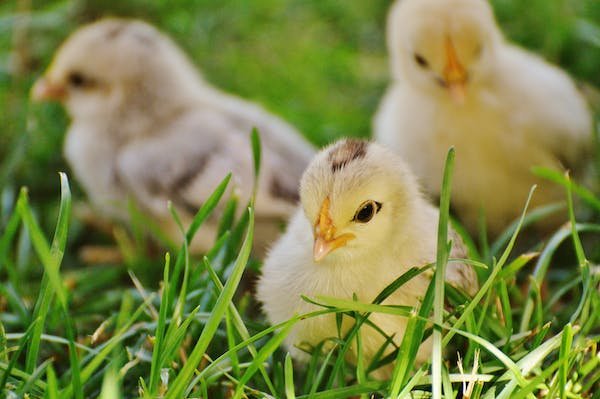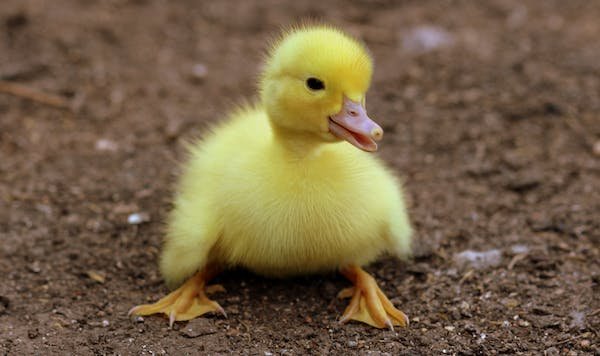Last Updated on October 16, 2024 by Daniele Lima
Understand health signs and behaviors: identify problems early
Ah… without a doubt, the arrival of a puppy at home is a moment of pure joy and expectation. However, with the cuteness and excitement that a new member brings also comes crucial responsibilities.
Taking care of a puppy requires more than affection and play; demands a deep understanding of the specific needs of this important phase of development.
This article aims to introduce puppy care basics, highlighting key strategies to ensure healthy growth and a robust start in life for our companions.
By exploring elements such as nutrition, socialization, training, and veterinary care, we aim to provide a comprehensive guide to guide owners in promoting well-being and building lasting bonds with their adorable pups.
Get ready to embark on a journey of discovery and learning about how to provide the essential foundations for the healthy development of our precious little friends:
Table of Contents
1 – How to take care for a baby bird
Taking care of birds can be challenging and requires special care. Here are some unique tips to help you care for your bird.
Species determination: Each bird species has specific requirements. Determine the species and adjust the diet and care accordingly.
Adequate heating: Young birds need a warm environment. If necessary, use an external heating source, such as a heat lamp, to maintain a consistent temperature in the area where your dog is sheltered.
Feeding formula: If they are not yet fully feathered, you may need to feed them a special puppy formula. Follow the manufacturer’s instructions to ensure adequate nutritional intake.
Food: Puppies need to be fed frequently, usually every two hours during the day. Make sure the food is at the right temperature and use a syringe or dropper to feed it.
Cleaning: Keep your dog’s environment clean and dry. Clean the area where it is housed regularly to prevent the proliferation of bacteria. Wash your hands before handling the puppy to prevent disease transmission.
Stimulation: Baby birds need stimulation to develop properly. Provide branches and other objects so they can exercise their muscles and beaks.
Visual contact: Birds are social animals, and eye contact is important to them. Stay close to your dog so he gets used to your presence. This may be important for successful reintegration into the wild later.
Contact an expert: If possible, contact an ornithologist or veterinarian who specializes in wildlife research. He can provide specific instructions depending on the species of bird and the situation.
Ready to launch: The ultimate goal is to reunite the cubs in the wild. As the bird grows, begin gradually introducing natural and permanent external environments to prepare you for release.
Create a natural environment: When the puppy is ready to be released, create a natural environment near where it was found. This helps ease the transition from the controlled environment to the wild.
Remote observation: After release, observe the bird from a distance to ensure it is adapting well to the wild. Avoid interfering unless there are signs that the bird is experiencing significant difficulties.
Provide shelter and protection: Make sure the release site offers adequate shelter and protection from predators. This may include areas with dense vegetation or elevated areas to avoid potential hazards.
Long-Term Monitoring: It is useful to monitor birds long after release. This can be done through occasional observation or, if possible, using a tracking device to help collect data on behavior and reintegration success.
2 – How to take care for a baby chick

Caring for a baby chick requires special attention to ensure its well-being and healthy development. Here are some basic guidelines:
Heating: Chicks need a constant heat source for the first few weeks of their lives. Use a heat lamp or bird-specific lamp to maintain the temperature between 32-35°C in the basking area. Gradually reduce the temperature as the chicks grow.
Shelter and Security: Provide a safe, secure shelter from predators. Avoid drafts and keep the environment well-ventilated.
Food: Use chicken feed or bird feed. Provide clean, fresh water in appropriate drinking fountains. Do not store in a humid place to avoid colds.
Correct handling: Wash your hands before handling chicks to avoid transferring bacteria. Handle them carefully, avoiding unnecessary stress.
Behavior Observation: Pay attention to the behavior of the chicks. If someone shows signs of weakness, isolation, or illness, isolate him from others and seek veterinary help if necessary.
Cleaning: Keep the environment clean by removing feces and food debris regularly. Change the coop bedding as needed.
Vaccination: Consult a poultry veterinarian to determine if it is necessary to vaccinate chicks against specific diseases.
Socialization: Provide adequate companionship to prevent chicks from feeling lonely.
Gradual Development: Gradually introduce dietary changes as the chicks grow. Provide enough space for them to move around and exercise.
Regular Monitoring: Watch the chicks grow and adjust care conditions as needed.
Adequate lighting: Maintain good lighting through a daily light/dark cycle. In the first few weeks, chicks typically need about 16 hours of light per day.
Fresh food: If you provide supplemental feed, choose feed specifically for chicks and avoid feeding feed that could be harmful.
Growth monitoring: Monitor coat and body development. If you notice any abnormalities, consult your veterinarian.
Gradual introduction to the external environment: When your chicks are ready, gradually introduce them to the outside environment. This may include supervised time spent outside the home.
Avoid contact with wild birds: Avoiding contact with wild birds helps prevent infections.
Maintain personal hygiene: Wash your hands after handling the bird to prevent the spread of disease.
Environmental enrichment: Provide toys or objects to encourage your puppies to explore.
Parasite prevention: Maintain a regular parasite control program. Talk to your veterinarian about the best method.
Sand and limestone delivery: Provide sand (pebbles or pebbles) to aid digestion and limestone for bone health.
Nutritional Learning Exercise: Teach your puppies to recognize food. It can be helpful to gently touch the food so they know where to find it.
Environmental monitoring: Be aware of extreme weather conditions and adjust temperatures if necessary.
Stress prevention: Avoid loud noises and stressful situations near where your chickens live.
3 – How to take care for a baby turtle
Caring for a baby turtle requires special attention to ensure it grows up healthy and happy. Here are some general guidelines:
Suitable Habitat: Make sure the tank or aquarium is large enough to allow movement. Provide a dry area and a watery area, as turtles need both environments.
Temperature and Lighting: Keep the water temperature around 25-28°C. Provide a heat lamp to create a land area with a temperature between 30-35°C. Use a UVB lamp to deliver ultraviolet rays, which are essential for healthy nail development.
Food: Provide a varied diet that includes turtle-specific foods, fresh vegetables such as lettuce, carrots kale, and sometimes small insects. Make sure the food is appropriate for your turtle’s size.
Habitat cleaning: Clean the tank regularly, remove residue, and replace the water. Keep the base clean and replace it as necessary.
Correct handling: Handle your turtle carefully and don’t pick it up too often to reduce stress. Wash your hands before handling to avoid transferring bacteria.
Health care: Watch for signs of illness, such as loss of appetite, lethargy, or behavioral changes. If necessary, consult a veterinarian who specializes in exotic animal care.
Encourage: Provide toys and decorations in the tank to stimulate your turtle’s interest. Change your environment regularly to avoid boredom.
Growth monitoring: Observe the growth of the shell and the turtle in general. Make sure your nails grow healthy and free from defects.
Safe environment: Do not place sharp or pointed objects in the habitat that could injure the turtle. Make sure your aquarium has a secure lid to prevent water leaks and protect your turtle from predators.
Step-by-step introduction to nutrition: If your turtle is very young, feed him gradually to avoid digestive problems. Initially serve small, easy-to-eat meals.
Save history: Record your turtle’s daily activities, including feeding, behavioral changes, and health problems. This can be helpful when discussing your turtle’s health with your veterinarian if necessary.
Additional training: Be aware of the special needs of your turtle species. Stay up to date with the latest updates or discoveries about turtle care.
Appropriate socialization (if any): If you have more than one turtle, observe the social dynamics between them. Check for signs of intrusion and secure a separate space if necessary.
Follow local regulations: Know your local laws and regulations regarding turtle ownership. Some areas may have restrictions for certain species.
4 – How to take care for a baby duck

Caring for ducklings requires special attention and appropriate care to ensure their well-being. Here are some tips to help you care for your ducklings.
Safe environment: Create a safe environment for your ducklings. Make sure there are no hazards around you, such as sharp objects, loose wires, or dangerous chemicals.
Heating: Ducklings are particularly susceptible to colds when they are very young. Use a heat lamp or other suitable heat source to keep the room warm. The temperature should be around 32-35°C for the first week and can be gradually reduced as the ducklings grow.
Clean water: Provide clean, fresh water for your ducklings to drink. Use a shallow bowl so they can easily reach the water without drowning. Avoid very deep tanks.
Proper nutrition: Prepare a suitable diet for your ducklings. At first, you can feed them waterfowl feed or a mixture of corn bran and water. Consult your veterinarian for specific advice on feeding your ducks.
Continuous monitoring: Always supervise your ducklings, especially if there are other pets or children around. They are fragile and can be easily injured.
Socialization: Ducklings are social animals, so it’s good to communicate regularly. However, do not overstimulate or scare the ducklings.
Nested boxes: Provide your ducklings with a nesting box or a safe place to rest. Make sure it’s comfortable and friendly.
Veterinarian: Consult your avian veterinarian to be sure your ducklings are healthy and receiving the care they need.
Cleaning: Keep your ducks’ environment clean by regularly changing their water and cleaning up any trash in their perching areas. Helps prevent disease and provides a healthy environment.
Gradual introduction to solid foods: As your ducklings grow, you can start adding solid foods, such as chopped vegetables and certain duck foods, to their diet.
Clinical view: Observe the development of your ducklings, including feather growth and feeding behavior. If you have any concerns or signs of illness, seek veterinary advice immediately.
Water Preparation: Once the ducklings are ready, they can gradually enter the water and swim. You must be present to ensure the water is not too deep and to supervise and ensure safety during this process.
Socialization: Ducks are social animals and benefit from coexistence with other members of their species. If possible, consider introducing the duckling to other ducks when it is ready.
Transition to Outdoor Life: As the duckling grows, prepare it for the transition to life outdoors by providing a safe and secure environment.
Conclusion:
In short, the main management strategies must be applied to promote your puppy’s healthy development. Careful attention to nutritional needs, adequate stimulation of physical and mental development, and a safe and loving environment are essential.
Having the mission of taking care of a puppy is more than rewarding and you can really enjoy this whole fascinating learning process. The bond between you will become greater every day and gratitude will certainly manifest itself in various ways through his behavior.
Always treat it with lots of love and affection, as it is a living being that deserves all our respect. Without a doubt, sincere feelings and the desire to care are the main attitudes that will make your pet a champion in health and beauty!
How to take care – FAQ:
How to take care of mums
To care for chrysanthemums, place them in a sunny location and make sure they get at least six hours of sunlight every day. Water regularly to keep the soil moist but not waterlogged. Chrysanthemums thrive in well-drained soil, consider adding compost or organic matter to improve the quality of the soil. During the growing season, apply a balanced fertilizer once a month to encourage lush blooms. Deadhead flowers promote regular flowering and disease resistance.
Apply mulch around the base to protect roots from frost when temperatures drop. Consider bringing potted chrysanthemums indoors or putting up a frost shield during cold weather. To keep your plants healthy, check for pests and diseases regularly and treat them promptly. Prune chrysanthemums in early spring to shape them and encourage full growth. Following these steps will ensure your mother stays fit and healthy throughout the growing season.
How to take care of a cat
Cat care should meet their basic needs and provide a loving environment. Make sure your cat has fresh water and nutrition appropriate for his age, health, and activity level. Keep the litter clean, vacuuming every day and changing the litter regularly. Cats need regular combing, especially long hair, to prevent tangling and reduce shedding. Schedule annual veterinarian visits for vaccinations and wellness exams, and watch for signs of illness.
Provide mental and physical stimulation through interactive toys and playtime. Create a safe, comfortable place where your cat can rest and feel safe. Secure hazardous materials, secure windows, and balconies, and make your home a cat-friendly environment. Show affection and build relationships through positive touch and support. These practices will ensure that your cat is healthy, happy, and harmonious.
How to take care of tulips
To care for tulips, plant the bulbs in full sun in well-drained soil in the fall, before the ground freezes. Plant the bulbs about 6-8 inches deep and 4-6 inches apart with the tips turned. Water the bulbs well after planting and regularly, especially during the dry season, but do not overwater. When tulips begin to bud in spring, use a balanced fertilizer to encourage growth and bloom.
Quickly remove faded flowers to prevent seeds from forming and redirect energy back to light. Leave dead leaves as this method provides nutrients for next spring. The leaves can be pruned when they turn yellow and wilt. If your area experiences harsh winters, use mulch to protect the bulbs from cold weather. These steps will help your tulips bloom beautifully year after year.











Leave a Reply